I spent a weekend in Ipoh for an event, but with the weekend over and the work week approaching I needed to get back to Kuala Lumpur. This was approaching the Aidilfitri week, so tickets for the trains and buses were getting hard to come by.
Fortunately for me, I would be going against the KL to Ipoh exodus, and managed to get a ticket for myself on the 1:25 pm ETS Gold service from Ipoh. This was 1 out of the remaining 12 tickets on that service.
First posted 5 June 2019. Updated 13 February 2023.
Booking my tickets
I booked my tickets on the old KTMB ticketing website. This was before KTMB introduced their now current KITS portal, so the experience was not as smooth as it could have been.
Departure experience at Ipoh
I’d earlier sacrificed my station walkabout time to make some pastry purchases. This left me with slightly less than 30 minutes to make the trip from the hotel to the station. This was easily done with me hailing a Grab, and assisted by the compact layout of Ipoh town, I got to the station with 15 minutes to spare.

Ipoh station is a magnificent colonial era building. Designed by Arthur Benison Hubback, the station opened in 1917 with its grandeur symbolising the tin mining-enabled-prosperity of Perak state at that time.
Arthur Hubback also designed the old Kuala Lumpur station, making Ipoh station its sister station on the network. Hubback was also responsible for a number of other buildings in Kuala Lumpur, including the prominent Sultan Abdul Samad building opposite Dataran Merdeka, and the landmark Masjid Jamek mosque at the confluence of the Klang and Gombak rivers.
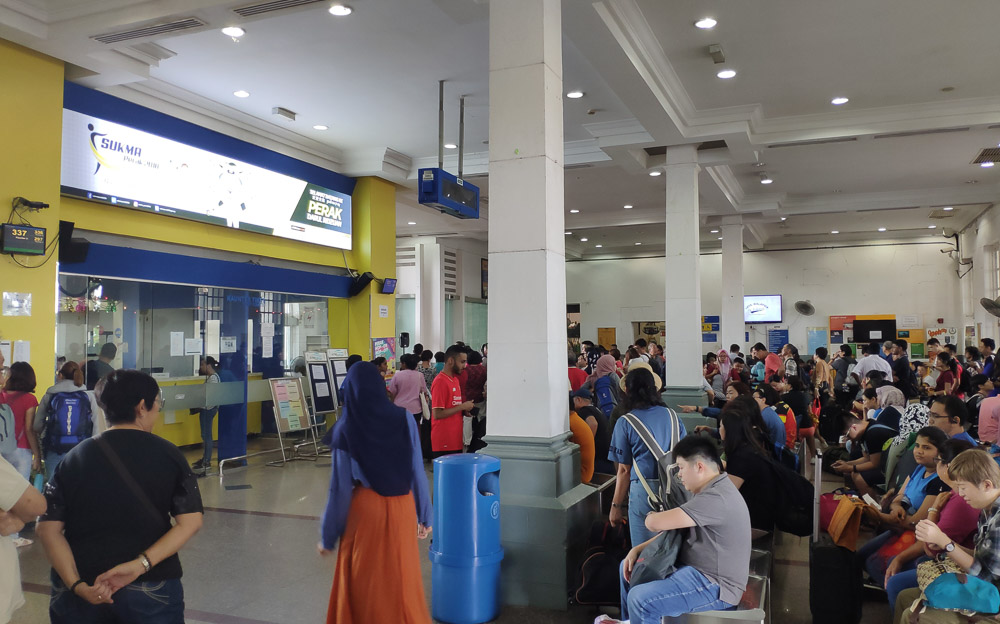
Despite the external grandeur, the waiting room at Ipoh station is quite small. While it has a high ceiling, the room’s function both as a ticketing room and a waiting room makes it cramped when a full trainload of passengers are waiting to board. This is because KTMB does not allow access to the platform until 10 minutes before departure, forcing passengers to queue at the gate for manual ticket checks.
This currently works well enough for KTMB as it lacks a system of auto-barriers for its intercity services, but could turn into a nightmare if and when they increase ETS frequencies.
2023 Update: KTMB has since introduced QR code-reading ticket barriers at its intercity stations. I have not been back to Ipoh station since this post, but I'm guessing things aren't as pleasant now.
At the 10 minute mark, the gate was opened and boarding was called. Despite the slow manual ticket check the queue managed to go through smoothly. I joined the queue and had my ticket given a glance through by the ticket guard, and emerged onto the platform under the airy roof added in 2007 during electrification.
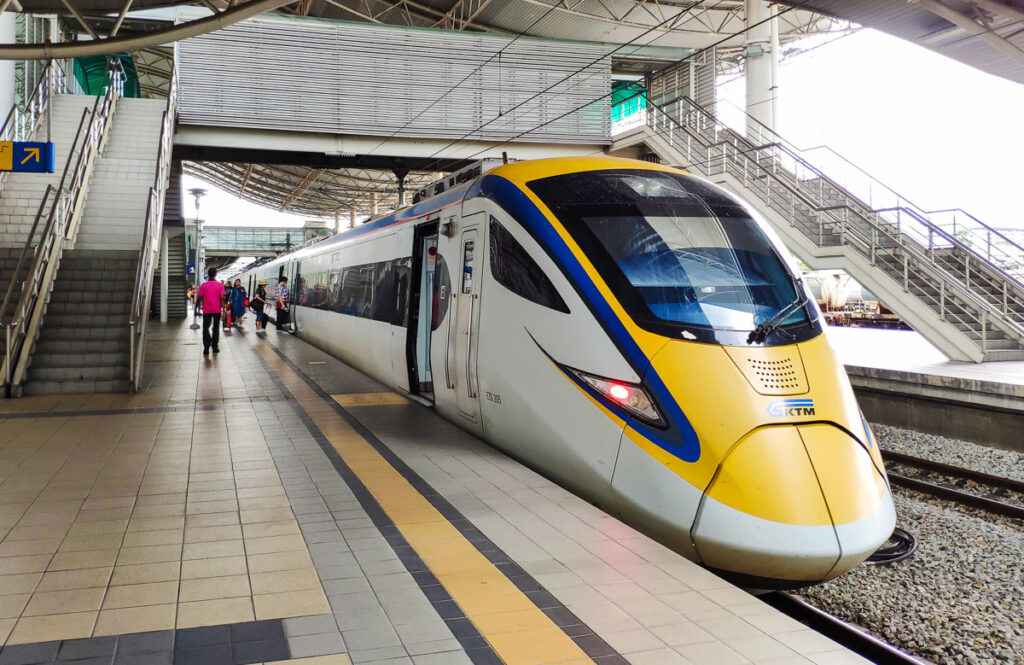
Unfortunately I was also greeted by the sleek sight of a 1st generation Class 93 EMU. KTMB usually operates its older Class 91 sets on the Ipoh-KL route, with Class 93s operating between the North and Gemas (via KL). I’ve had previous experiences with the Class 93 so I was hoping for the Class 91 instead, being already familiar with their Irish cousins and eager for a comparative look. Alas, it wasn’t to be.
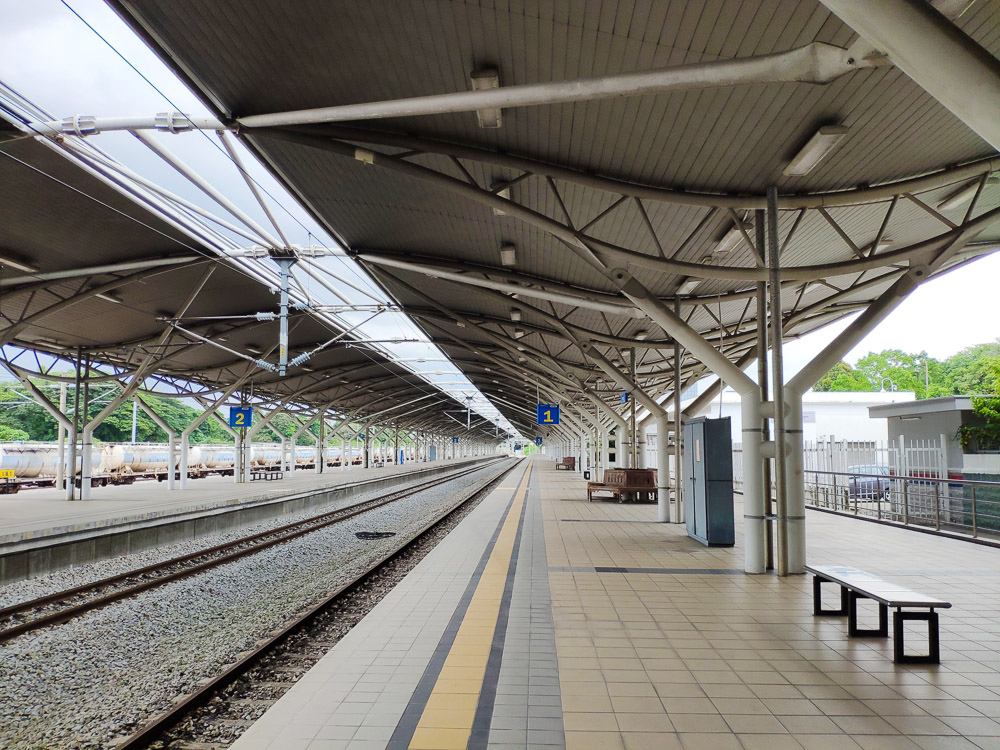
Ipoh station’s renovation gave it longer platforms shaded by curving, modern roofs, a common design language for stations built during the Ipoh-Rawang electrification project.
The doors closed at 3:24 pm and the train departed at 3:25 pm sharp. I booked what I thought was going to be a forward facing seat, so it was a with a resigned sigh that I settled into my actually backward-facing seat.
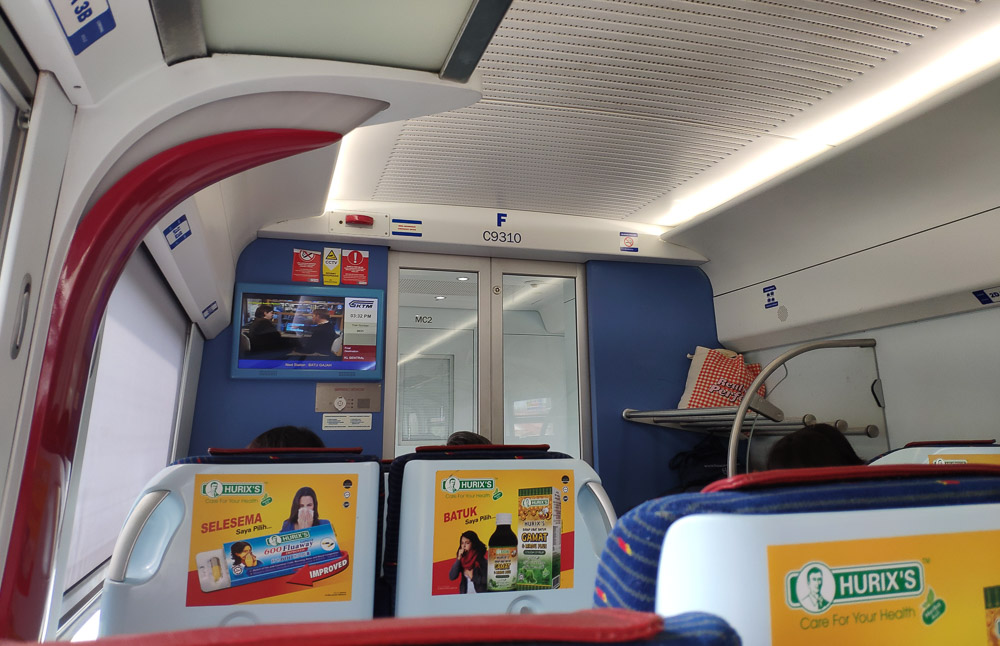
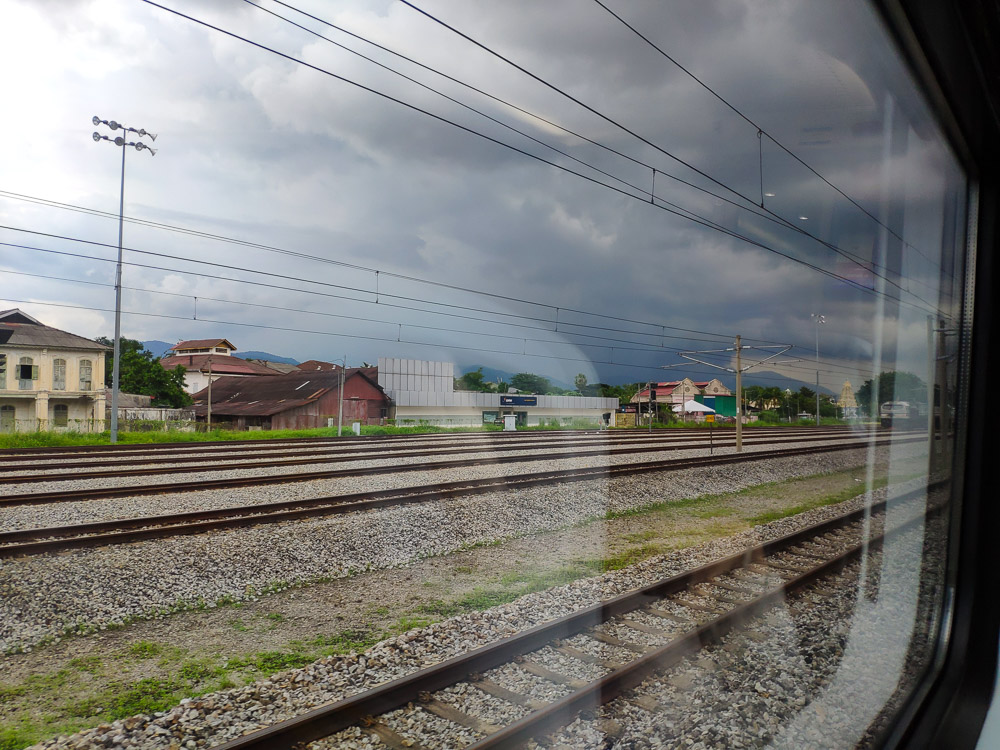
Cabin & Onboard Amenities
Despite being in service for 4 years at this point, the train’s interior looked generally well maintained. Seats were clean and in good condition, while the walls were free of the black feet stains that usually accompany all-white train interiors. That being said, the characteristic light pillars that feature on 1st generation Class 93 sets were not in good shape – all save a pair in my carriage were not functioning.
ETS Gold services are Standard Class only, and are usually operated by these 1st generation Class 93 sets.
The Standard Class seats
The standard class seats onboard were arranged in an open plan 2-2 configuration with half of the seats onboard facing the direction of travel.
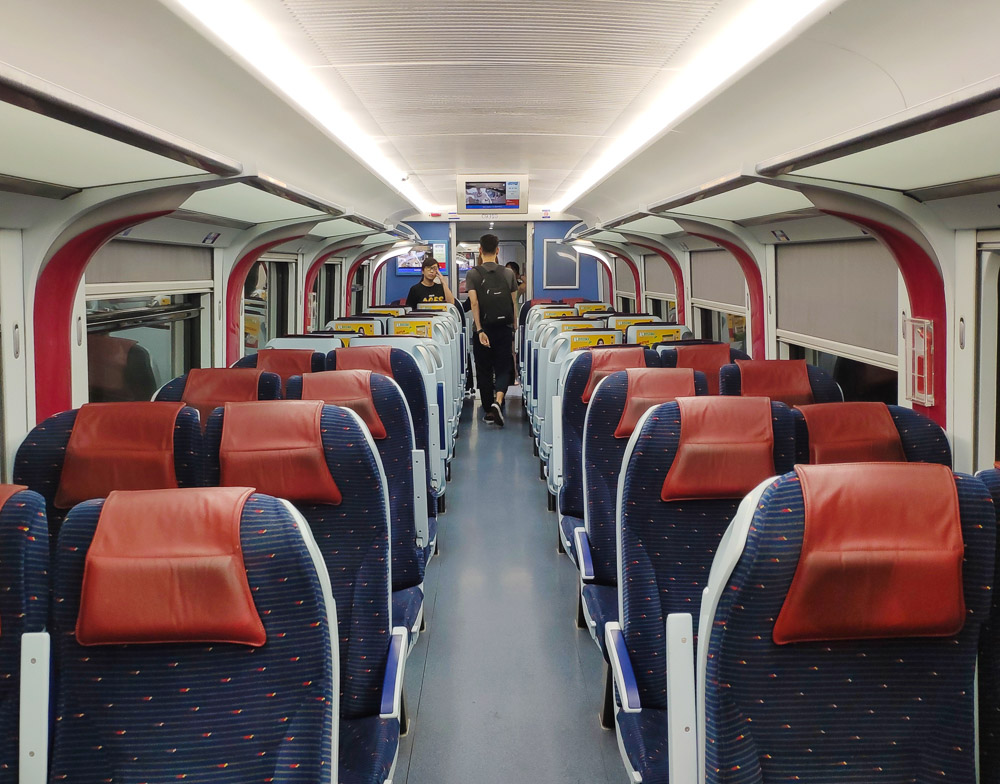
The seats have a slightly flat back, but was comfortable enough for a nap when reclined. I must say the lacklustre lumbar support did give my lower back some amount of strain after an hour or so.
Onboard amenities – the toilets
The generally clean state onboard also extended to the toilets, or at least the one I had a look at. Interestingly enough despite the sink and mirror assembly coming with a built-in paper towel and soap dispensers, paper towels were unavailable and staff had elected to provide a separate bottle of soap instead, leaving the soap empty.
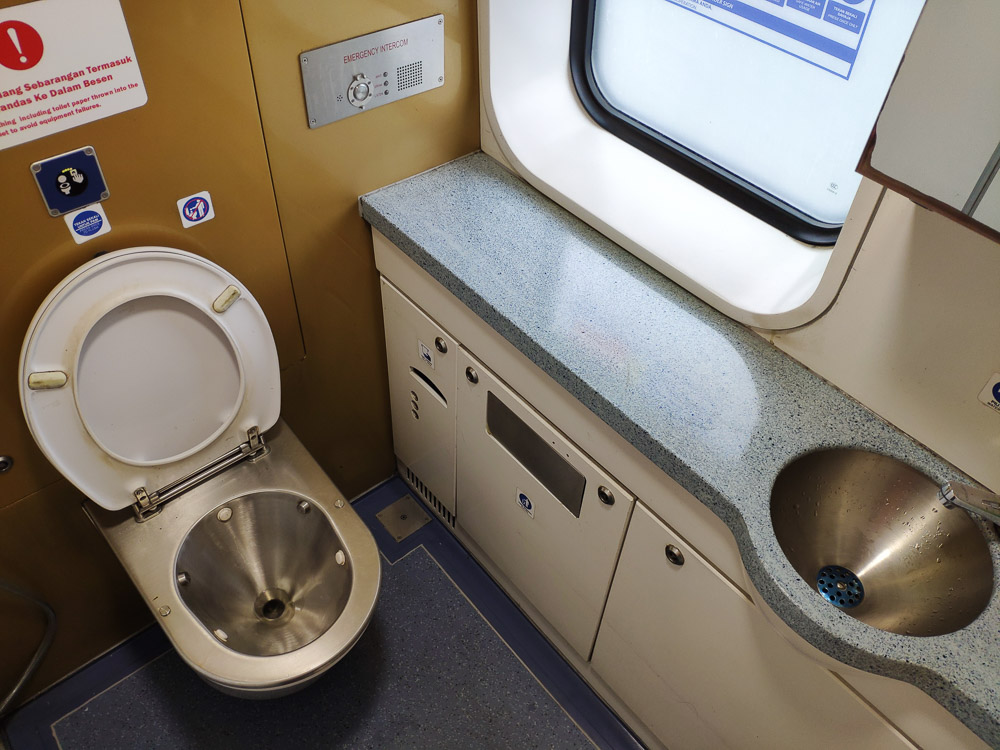
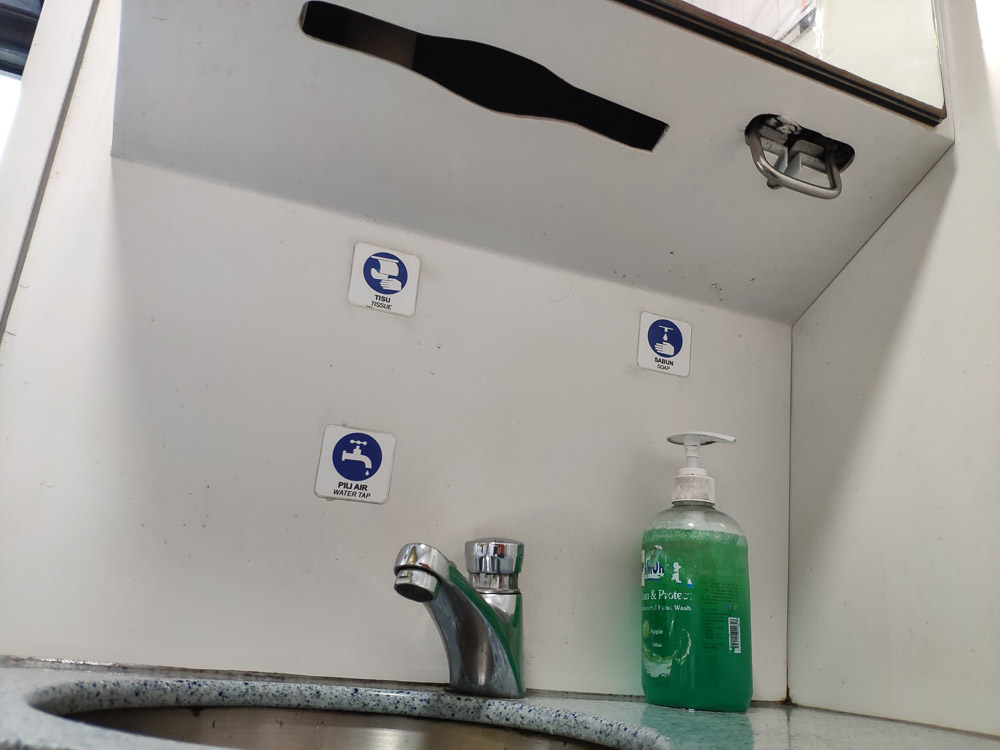
The lack of paper towels also meant that users would leave with wet hands, which is a minus point.
Onboard catering
I was feeling peckish around an hour plus into the journey, so I decided to check out the food options onboard.
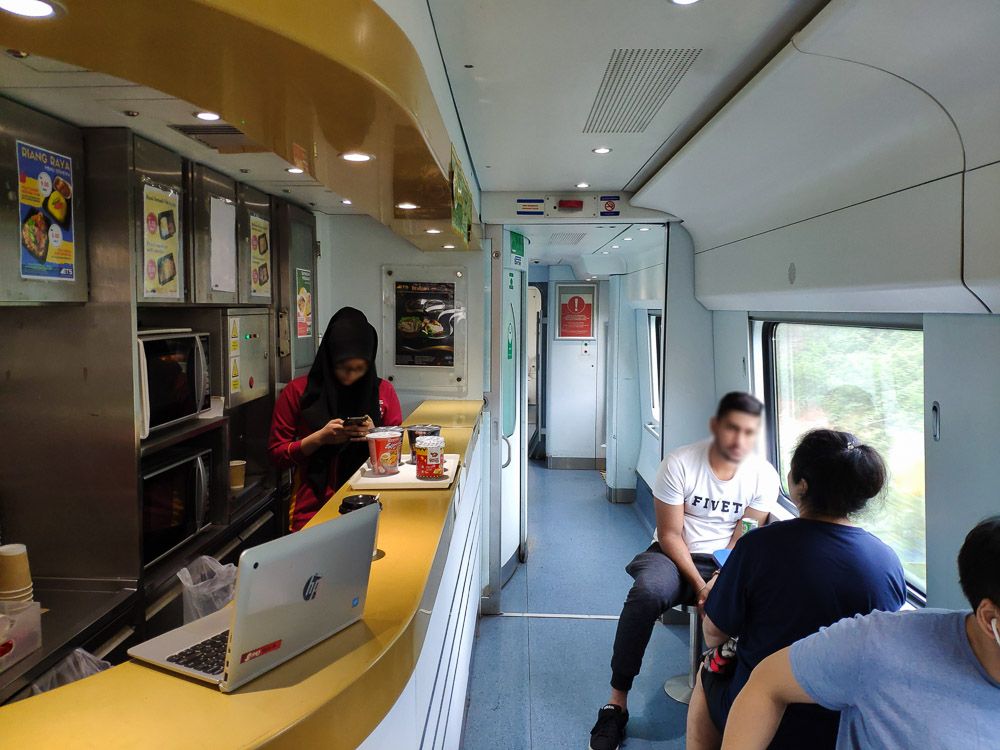
There are no dedicated buffet cars on the ETS trains, and only a bistro counter built into coach C, taking up the space where seats would otherwise have occupied.
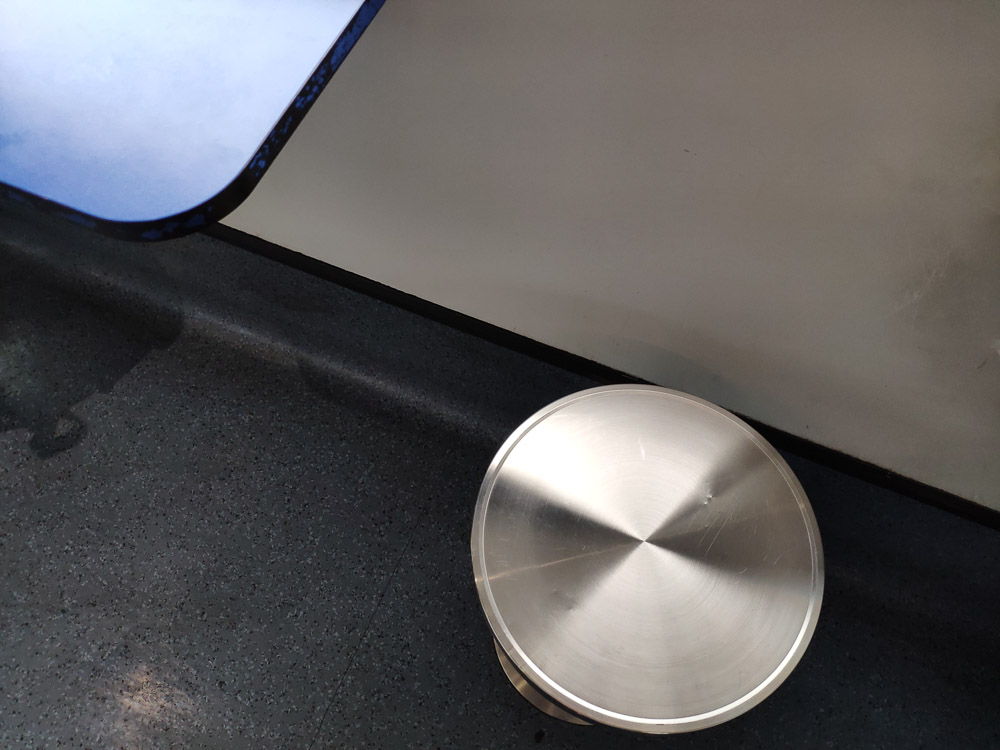
KTMB-CRRC have managed to squeeze in small stools and tables that fit a maximum of 4 people. The previous iteration of the stool was a plastic, red bar stool-like stool which was hard to sit firmly on. This time they have been replaced (at least on this trainset) with a round, flat stainless steel conventional stool, which should make for easier seating.
The whole layout of the cafe corner on ETS trains is one of my biggest pet peeves, so I won’t go into detail here lest I end up with a thesis instead.
KTMB has made some changes to their menu options, which are mostly rice based dishes like fried rice. An exception is the addition of the Lasagna option which made me curious that I decided to give it a shot together with a hot cup of coffee. Food prices range between RM8 to RM 10, and would be considered pricey for the size.
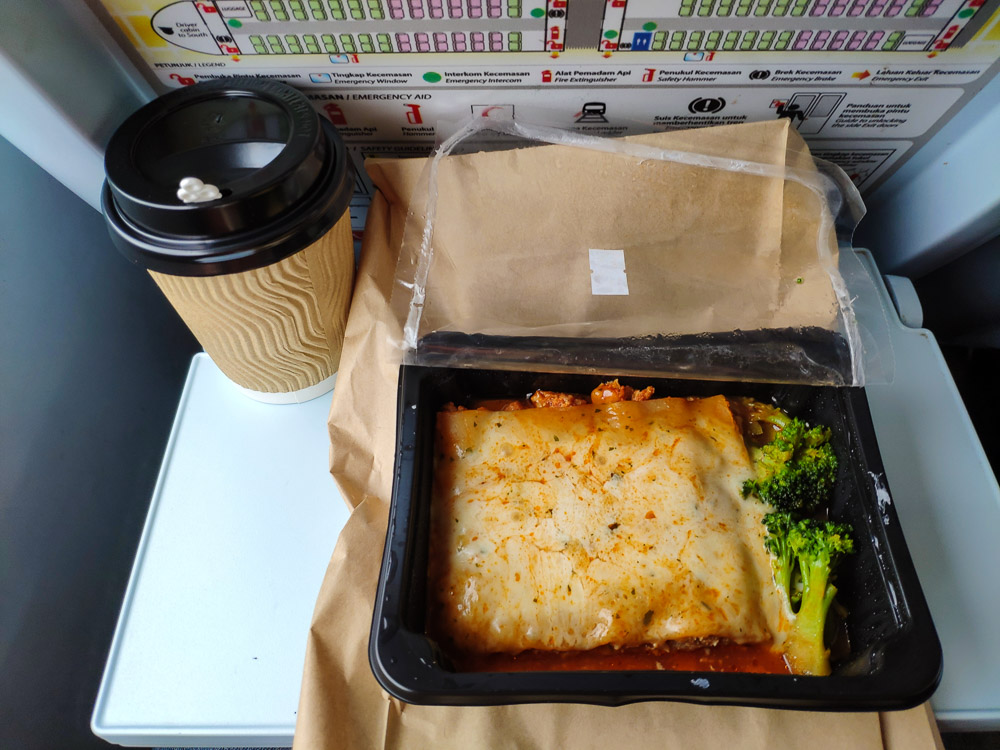
The lasagna actually tasted decent, though of course it wouldn’t win any awards. In terms of quality I’d say it outranked the Nasi Lemak I had on the Gemas service 2 years ago. Still, I must question the decision to include broccoli, as it seemed like an odd vegetable to have with lasagna, plus it got soggy once microwaved.
Arrival at KL Sentral
Despite several stops for signal clearance on the single track segment (thanks to the track upgrade works being done in the Klang Valley), the train pulled into KL Sentral station bang on time at 6:15 pm. It had been an adequately comfortable journey from Ipoh and I felt well rested after the nap I had. The punctual performance was also very well appreciated after the eventful day before.
The weather was also rainy throughout the journey, which meant that one could more or less pretend this was a Virgin Trains Class 390 Pendolino service to Euston.
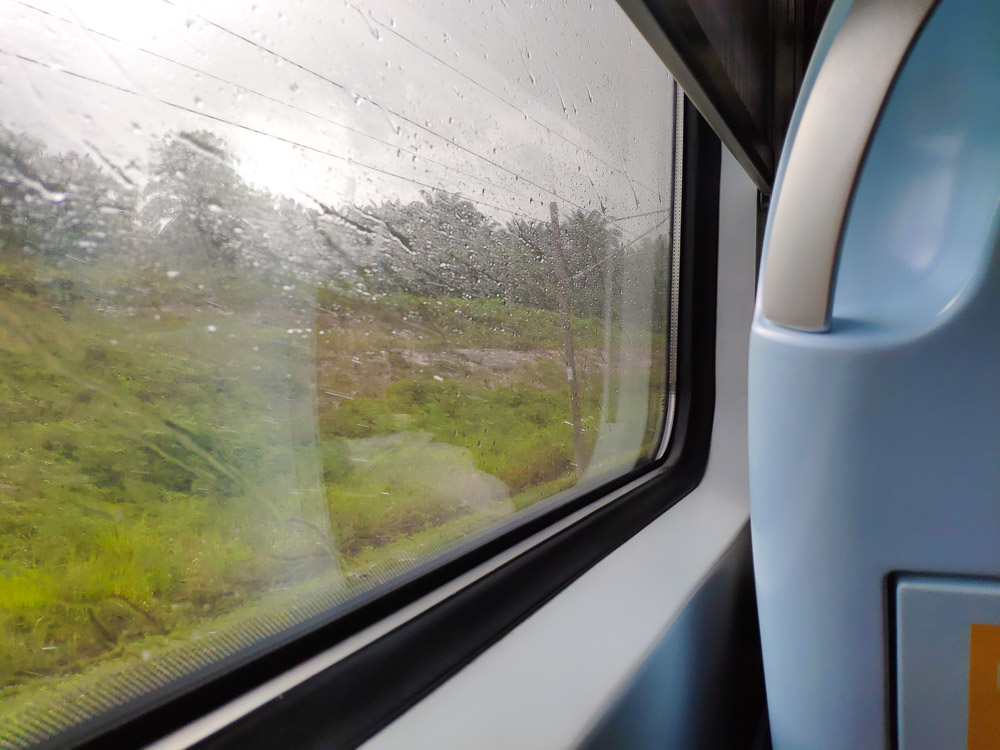
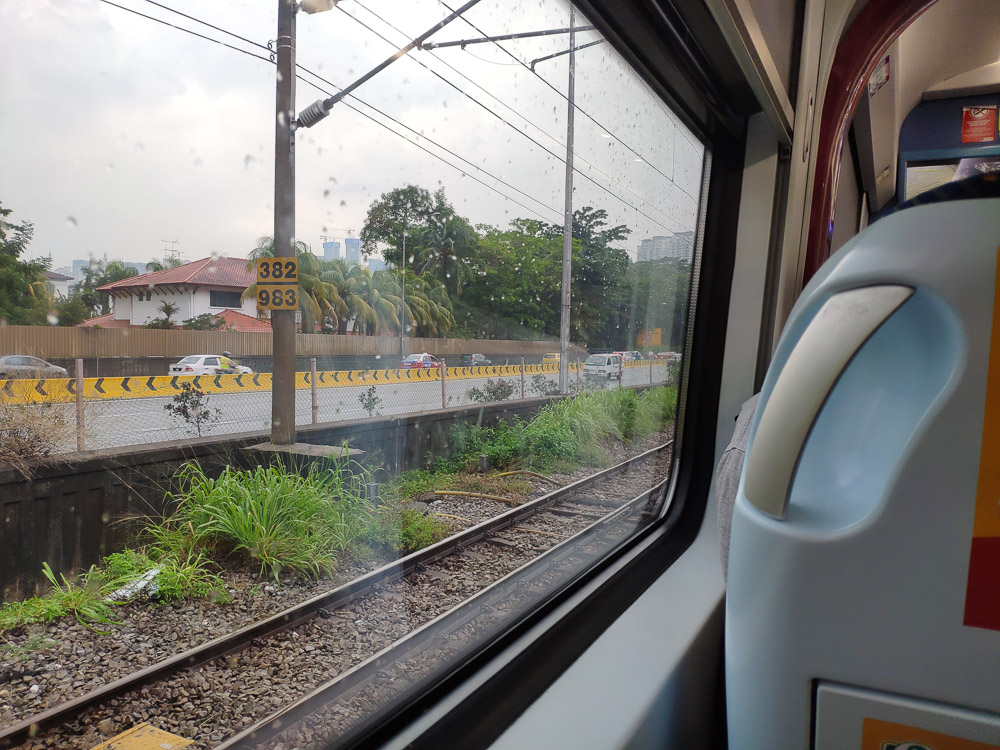

Final thoughts
Credit where its due, KTMB can be consistent with the service level it provides. At the same time, we have to remember that KTMB is running less services to cater for the track upgrade works, and so this punctuality is actually the bare minimum of what it should be doing. KTMB still has a long way to go to improve its service levels and reputation, and occasional good trips shouldn’t be seen as a sign of overall improvement across the board.

Leave a Reply